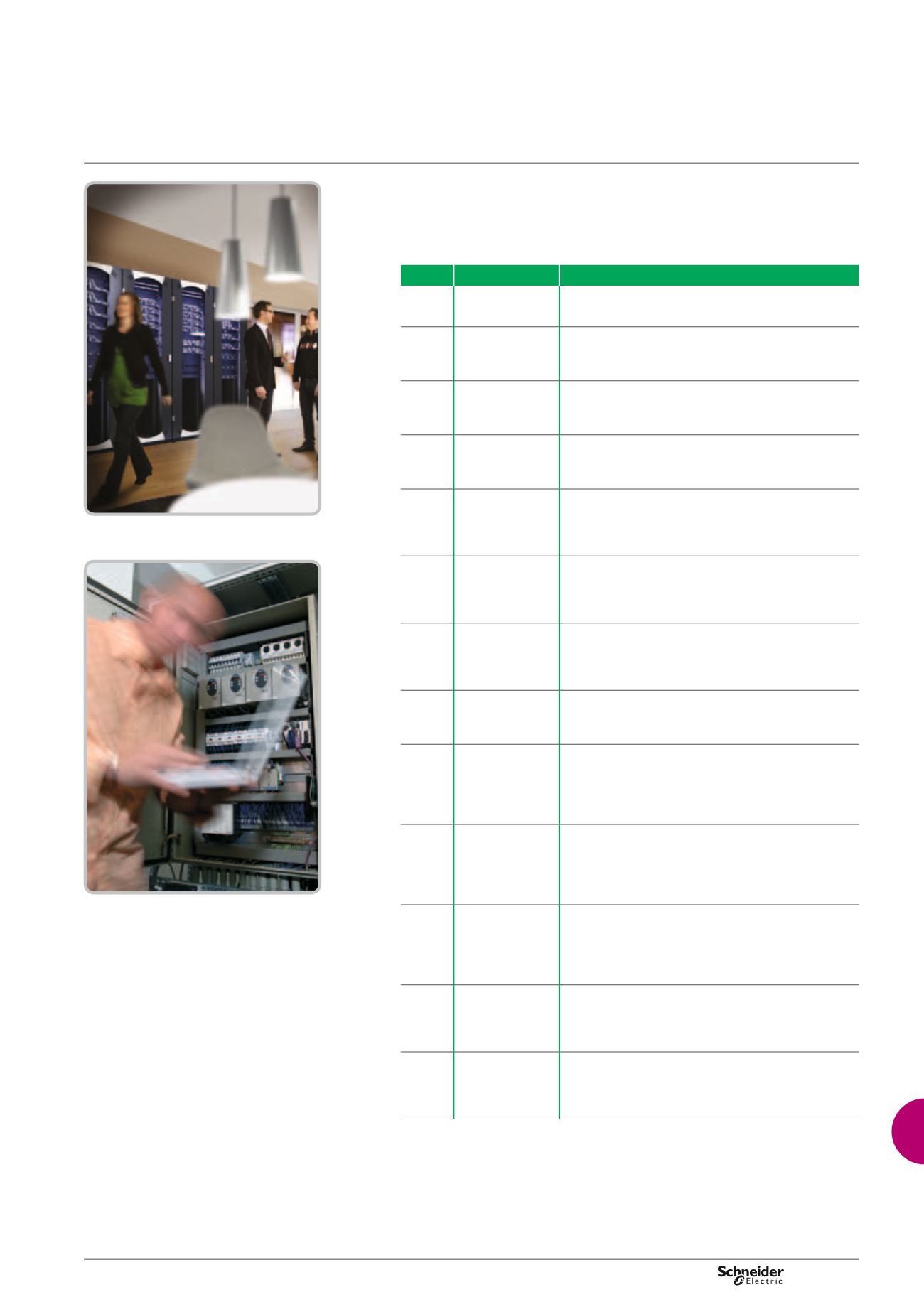

537
PB500063-55
PB5000064-55
Technical annexes
Classification of electrical
equipment enclosures
according to NEMA and UL
The enclosures must protect the equipment against environmental conditions and
protect the personnel against the risk of incidental contact with the equipment.
The following classifications (Type) are required according to the required uses
and prescriptions:
Type Use
Prescription
1
Indoor use
The enclosure provides protection for the personnel against
incidental contact with the internal equipment and protects
said equipment against dirt.
2
Indoor use
It provides protection for the personnel against incidental
contact with the internal equipment and protects said
equipment against dirt, drips and gentle splashes of
non-corrosive liquids.
3
Indoor and
outdoor use
The enclosure provides protection for the personnel against
incidental contact with the internal equipment and protects
said equipment against dirt, rain, sleet, snow, windblown
and resists the formation of ice on the outside.
3R
Indoor and
outdoor use
The enclosure provides protection for the personnel against
incidental contact with the internal equipment and protects
said equipment against dirt, rain, sleet, snow and resists
the formation of ice on the outside.
3S
Indoor and
outdoor use
The enclosure provides protection for the personnel against
incidental contact with the internal equipment and protects
said equipment against dirt, rain, sleet, snow and windblown
dust. The external mechanism must continue to work even
when layers of ice are formed.
4
Indoor and
outdoor use
The enclosure provides protection for the personnel against
incidental contact with the internal equipment and protects
said equipment against dirt, rain, sleet, snow, windblown dust,
splashes and hose-directed water and resists the formation
of frost on the outside.
4x
Indoor and
outdoor use
The enclosure provides protection for the personnel against
incidental contact with the internal equipment and protects
said equipment against dirt, rain, sleet, snow, windblown dust,
splashes, hose-directed water and resists corrosion and the
formation of ice on the outside.
5
Indoor use
The enclosure provides protection for the personnel against
incidental contact with the internal equipment and protects
said equipment against dirt, settling airborne dust, lint, fibres,
flyings, drips and gentle splashes of non-corrosive liquids.
6
Indoor and
outdoor use
The enclosure provides protection for the personnel against
incidental contact with the internal equipment and protects
said equipment against dirt, rain, sleet, snow, hose-directed
of water, the entry of water during occasional temporary
submersion to a limited depth and resists the formation
of ice on the outside.
6P
Indoor and
outdoor use
The enclosure provides protection for the personnel against
incidental contact with the internal equipment and protects
said equipment against dirt, rain, sleet, snow, hose-directed
water, the entry of water during prolonged submersion to a
limited depth and resists corrosion and the formation of ice
on the outside.
12
Indoor use
(without knockouts)
The enclosure provides protection for the personnel against
incidental contact with the internal equipment and protects
said equipment against dirt, dust, fluff, fibres, particles in
suspension, drips and gentle splashes of non-corrosive
liquids as well as gentle splashes or leaks of oil and
non-corrosive coolants.
12K
Indoor use
(enclosures with
pre-routing)
The enclosure provides protection for the personnel against
incidental contact with the internal equipment and protects
said equipment against dirt, dust, lint, fibres flyings drips and
gentle splashes of non-corrosive liquids as well as gentle
splashes or leaks of oil and non-corrosive coolants.
13
Indoor use
The enclosure provides protection for the personnel against
incidental contact with the internal equipment and protects
said equipment against dirt, dust, lint, fibres flyings and the
spraying, splashing, and seepage leaks of water, oil or
non-corrosive coolants.
Note:
The above recommendations aim to explain the NEMA and UL classifications,
but are not the official texts of NEMA or UL.
The exact definitions provided by the Organisations are those of standards NEMA 250
and UL 50E.


















